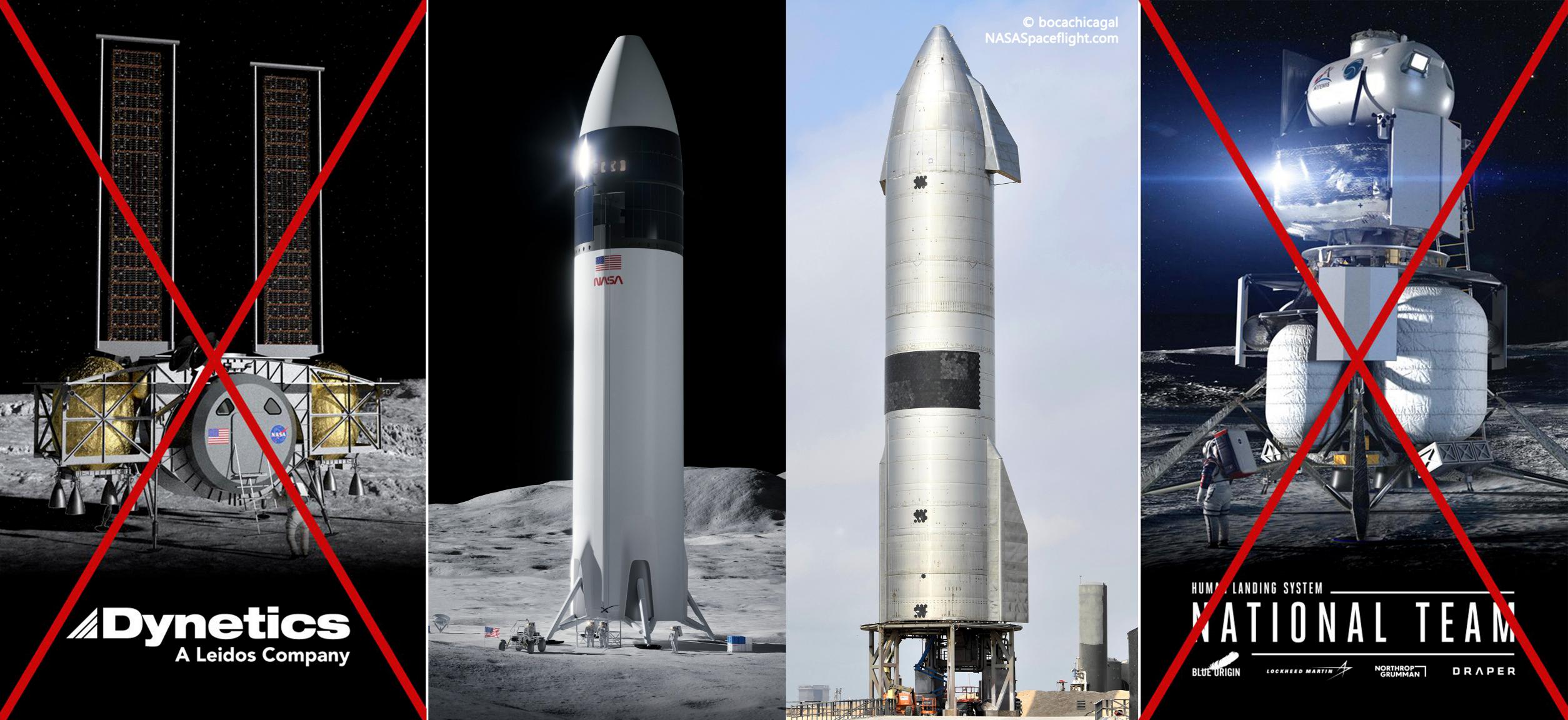
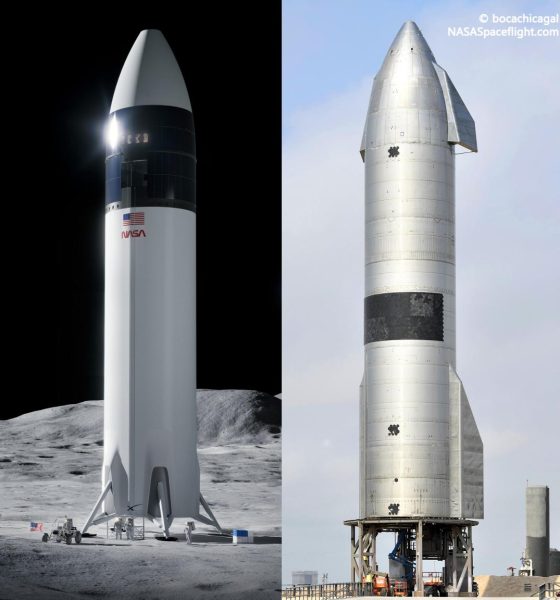
News
SpaceX’s upgraded Starship set for test flight despite sore NASA contract losers
Within the last week, while SpaceX has been diligently working to ready an upgraded Starship prototype for its first launch, former competitors Blue Origin and Dynetics – both of which recently lost a historic NASA Moon lander contract to SpaceX – have filed “protests” and forced the space agency to freeze work (and funds).
That means that NASA is now legally unable to use funds or resources related to its Human Lander System (HLS) program or the $2.9 billion contract it awarded SpaceX on April 16th to develop a variant of Starship to return humanity to the Moon. However, just like SpaceX has already spent a great deal of its own time and money on Starship development and – more recently – a rapid-fire series of launches, the company appears to have no intention of letting sore losers hamper its rocket factory or test campaign.
Instead, on the same two days Blue Origin and Dynetics loudly filed official protests with the US Government Accountability Office (GAO), SpaceX performed two back-to-back static fire tests with a Starship prototype and Raptor engines outfitted with “hundreds of improvements.” Technical challenges and unsavory weather conditions forced SpaceX to call off a launch planned sometime last week but the company now appears to be on track to launch Starship prototype SN15 as early as Tuesday, May 4th.
In principle, the ability for companies to protest US government contracting decisions is a necessity and (nominally) a net good but it can easily be misused – and often in damaging ways. In the case of Blue Origin and Dynetics, it’s difficult not to perceive both protests as examples of the latter.
Blue Origin effectively disagrees with every single major point made and conclusion drawn by NASA’s Source Selection Authority (Kathy Lueders) and a separate panel of experts – often to the point that the company is strongly implying that it understands NASA’s contracting process better than the space agency itself. Blue Origin partners Northrop Grumman and Lockheed Martin are both partially or fully responsible for several of their own catastrophic acquisition boondoggles (F-35, Orion, SLS, James Webb Space Telescope, etc.) and are part of the military-industrial complex primarily responsible for turning US military and aerospace procurement into the quagmire of political interests, quasi-monopolies, and loopholes it is today.
The primary argument is generally shared by both protestors. In essence, Dynetics [p. 23; PDF] and Blue Origin [PDF] believe that it was unfair or improper for NASA to select just a single provider from the three companies or groups that competed. They argue that downselecting to one provider in lieu of budget shortfalls changed the procurement process and competition so much that NASA should have effectively called it quits and restarted the entire five-month process. Blue Origin and Dynetics also both imply that they were somehow blindsided by NASA’s concerns about a Congressional funding shortfall.
In reality, NASA could scarcely have been clearer that it was exceptionally sensitive about HLS funding and extremely motivated to attempt to return humans to the Moon by 2024 with or without the full support of Congress – albeit in fewer words. As Lueders herself noted in the HLS Option A award selection statement, the solicitation Blue, Dynetics, and SpaceX responded to states – word for word – that “the overall number of awards will be dependent upon funding availability and evaluation results.”
Additionally, implications that NASA somehow blindsided offerors with its lack of funding are woefully ignorant at best and consciously disingenuous at worse. Anyone with even the slightest awareness of the history of large-scale NASA programs would know that the space agency’s budget is all but exclusively determined by Congress each year and liable to change just as frequently if political winds shift. Short of blackmailing members of Congress or wistfully hoping that other avenues of legal political influence and partnership actually lead to desired funding and priorities appearing in appropriations legislation, NASA knows the future of its budget about as well as anyone else with access to the internet and a rudimentary awareness of history and current events.
It became clear that Congress was likely to drastically underfund NASA’s HLS program as early as November 2020 – weeks before HLS Option A proposals were due. The latest appropriations bill was passed on January 3rd, 2021, providing NASA $850 million of the ~$3.4 billion it requested for HLS. Historically, NASA’s experience with the Commercial Crew Program – public knowledge available to anyone – likely made it clear to the agency that it could not trust Congress to fund its priorities in good faith when half a decade of drastic underfunding ultimately delayed the critical program by several years. That damage was done by merely halving NASA Commercial Crew budget request from 2010 to 2013, whereas Congress had already set itself on a path to provide barely a quarter of the HLS funds NASA asked for in the weeks before Moon lander proposals were due.
Ultimately, the protests filed by Blue Origin and Dynetics are packed to the brim with petty axe-grinding, attempts to paint SpaceX in a negative light, and a general lack of indication that either company is operating in good faith. Instead, their protests appear all but guaranteed to fail while simultaneously forcing NASA to freeze HLS work and delay related disbursements for up to 100 days. Given that SpaceX is now technically working to design, build, qualify, and fly an uncrewed Lunar Starship prototype by 2023 and a crewed demonstration landing by 2024, 100 days represents a full 7-10% of the time that’s available to complete that extraordinary task.
Ironically, the protests made by Blue Origin and Dynetics have already helped demonstrate why NASA’s decision – especially in light of unambiguous budgetary restrictions – to sole-source its HLS Moon lander contract to SpaceX was an astute one. Had a victorious Blue Origin or Dynetics been in a similar position to SpaceX, it’s almost impossible to imagine either team continuing work to a significant degree in lieu of NASA funding or direction. SpaceX, on the other hand, hasn’t missed a beat and looks set to continue Starship development, production, and testing around the clock regardless of NASA’s capacity to help.
In other words, with a little luck, the actual schedule impact of a maximum 100-day work and funding freeze should be a tiny fraction of what it could have been if NASA had selected an HLS provider more interested in profit margins and stock buybacks than creating a sustainable path for humanity’s expansion beyond Earth.

Elon Musk
GM CEO Mary Barra says she told Biden to give Tesla and Musk EV credit
“He was crediting me, and I said, ‘Actually, I think a lot of that credit goes to Elon and Tesla…You know me, Andrew. I don’t want to take credit for things.”
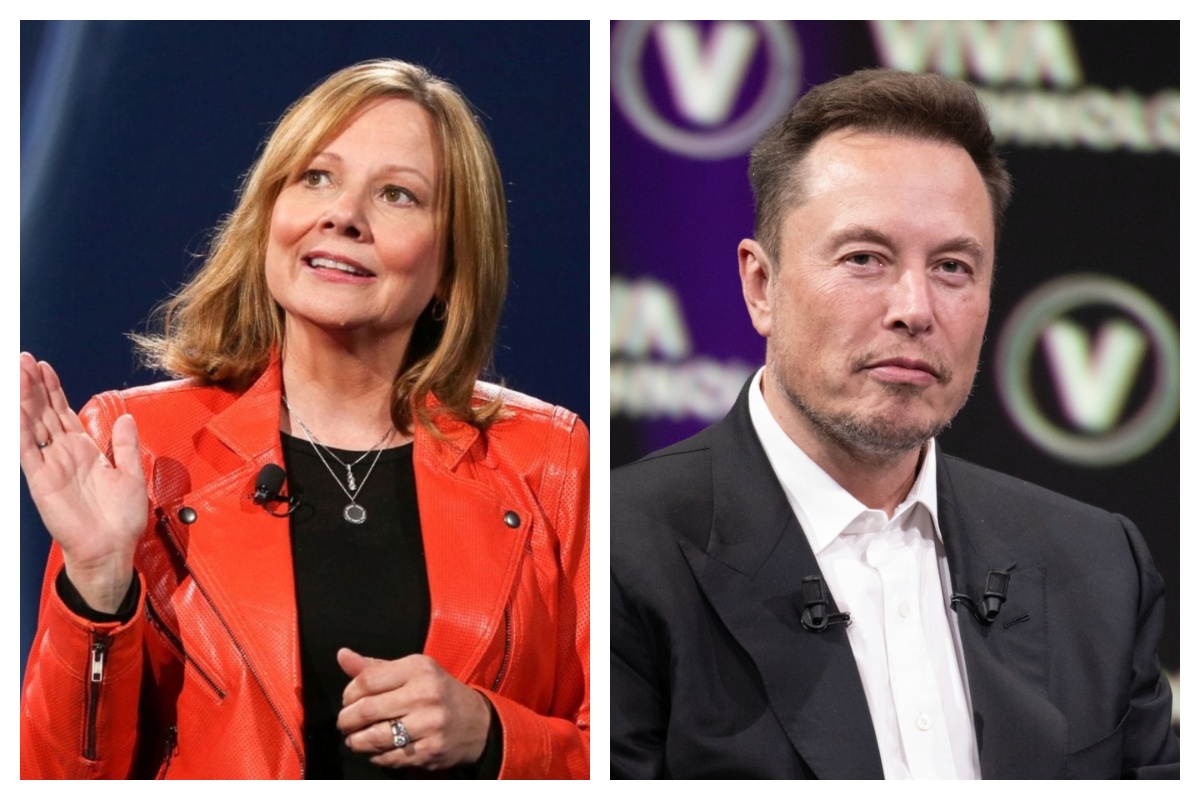
General Motors CEO Mary Barra said in a new interview on Wednesday that she told President Joe Biden to credit Tesla and its CEO, Elon Musk, for the widespread electric vehicle transition.
She said she told Biden this after the former President credited her and GM for leading EV efforts in the United States.
During an interview at the New York Times Dealbook Summit with Andrew Ross Sorkin, Barra said she told Biden that crediting her was essentially a mistake, and that Musk and Tesla should have been explicitly mentioned (via Business Insider):
“He was crediting me, and I said, ‘Actually, I think a lot of that credit goes to Elon and Tesla…You know me, Andrew. I don’t want to take credit for things.”
GM CEO Mary Barra said to Andrew Sorkin at the New York Times Dealbook Summit that she pulled President Biden aside and said Tesla CEO @elonmusk deserved the credit for EVs:
“He was crediting me, and I said, ‘Actually, I think a lot of that credit goes to Elon and Tesla,'” Barra… pic.twitter.com/OHBTG1QfbJ
— TESLARATI (@Teslarati) December 3, 2025
Back in 2021, President Biden visited GM’s “Factory Zero” plant in Detroit, which was the centerpiece of the company’s massive transition to EVs. The former President went on to discuss the EV industry, and claimed that GM and Barra were the true leaders who caused the change:
“In the auto industry, Detroit is leading the world in electric vehicles. You know how critical it is? Mary, I remember talking to you way back in January about the need for America to lead in electric vehicles. I can remember your dramatic announcement that by 2035, GM would be 100% electric. You changed the whole story, Mary. You did, Mary. You electrified the entire automotive industry. I’m serious. You led, and it matters.”
People were baffled by the President’s decision to highlight GM and Barra, and not Tesla and Musk, who truly started the transition to EVs. GM, Ford, and many other companies only followed in the footsteps of Tesla after it started to take market share from them.
Elon Musk and Tesla try to save legacy automakers from Déjà vu
Musk would eventually go on to talk about Biden’s words later on:
“They have so much power over the White House that they can exclude Tesla from an EV Summit. And, in case the first thing, in case that wasn’t enough, then you have President Biden with Mary Barra at a subsequent event, congratulating Mary for having led the EV revolution.”
In Q4 2021, which was shortly after Biden’s comments, Tesla delivered 300,000 EVs. GM delivered just 26.
News
Tesla Full Self-Driving shows confident navigation in heavy snow
So far, from what we’ve seen, snow has not been a huge issue for the most recent Full Self-Driving release. It seems to be acting confidently and handling even snow-covered roads with relative ease.
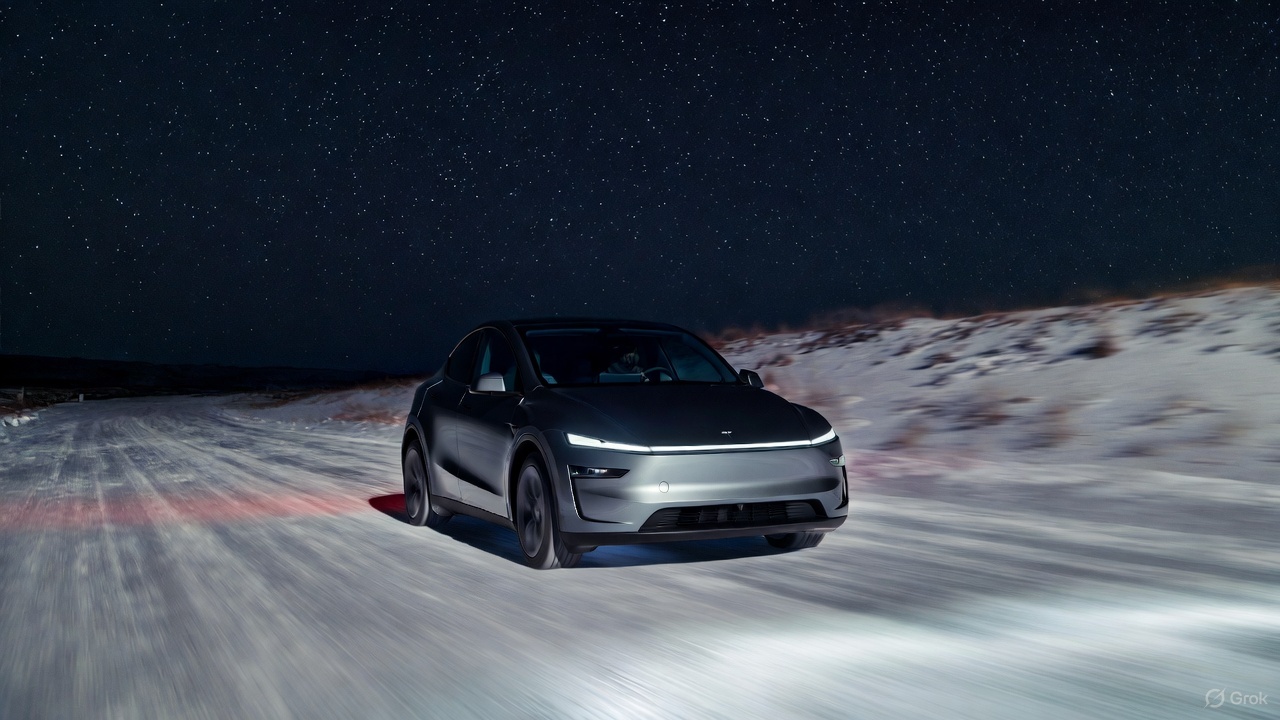
Tesla Full Self-Driving is getting its first taste of Winter weather for late 2025, as snow is starting to fall all across the United States.
The suite has been vastly improved after Tesla released v14 to many owners with capable hardware, and driving performance, along with overall behavior, has really been something to admire. This is by far the best version of FSD Tesla has ever released, and although there are a handful of regressions with each subsequent release, they are usually cleared up within a week or two.
Tesla is releasing a modified version of FSD v14 for Hardware 3 owners: here’s when
However, adverse weather conditions are something that Tesla will have to confront, as heavy rain, snow, and other interesting situations are bound to occur. In order for the vehicles to be fully autonomous, they will have to go through these scenarios safely and accurately.
One big issue I’ve had, especially in heavy rain, is that the camera vision might be obstructed, which will display messages that certain features’ performance might be degraded.
So far, from what we’ve seen, snow has not been a huge issue for the most recent Full Self-Driving release. It seems to be acting confidently and handling even snow-covered roads with relative ease:
FSD 14.1.4 snow storm Ontario Canada pic.twitter.com/jwK1dLYT0w
— Everything AI (@mrteslaspace) November 17, 2025
I found the steepest, unplowed hill in my area and tested the following:
• FSD 14.2.1 on summer tires
• FSD 14.2.1 on winter tires
• Manual drivingBut I think the most impressive part was how FSD went DOWN the hill. FSD in the snow is sublime $TSLA pic.twitter.com/YMcN7Br3PU
— Dillon Loomis (@DillonLoomis) December 2, 2025
Well.. I couldn’t let the boys have all the fun!
Threw the GoPro up and decided to FSD v14.2.1 in the snow. Roads were not compacted like the other day, a little slippery, but overall doable at lower speeds. Enjoy the video and holiday music 🎶
Liked:
Took turns super slow… pic.twitter.com/rIAIeh3Zu3— 🦋Diana🦋 (@99_Colorado) December 3, 2025
Moving into the winter months, it will be very interesting to see how FSD handles even more concerning conditions, especially with black ice, freezing rain and snow mix, and other things that happen during colder conditions.
We are excited to test it ourselves, but I am waiting for heavy snowfall to make it to Pennsylvania so I can truly push it to the limit.
News
Tesla hosts Rome Mayor for first Italian FSD Supervised road demo
The event marked the first time an Italian mayor tested the advanced driver-assistance system in person in Rome’s urban streets.
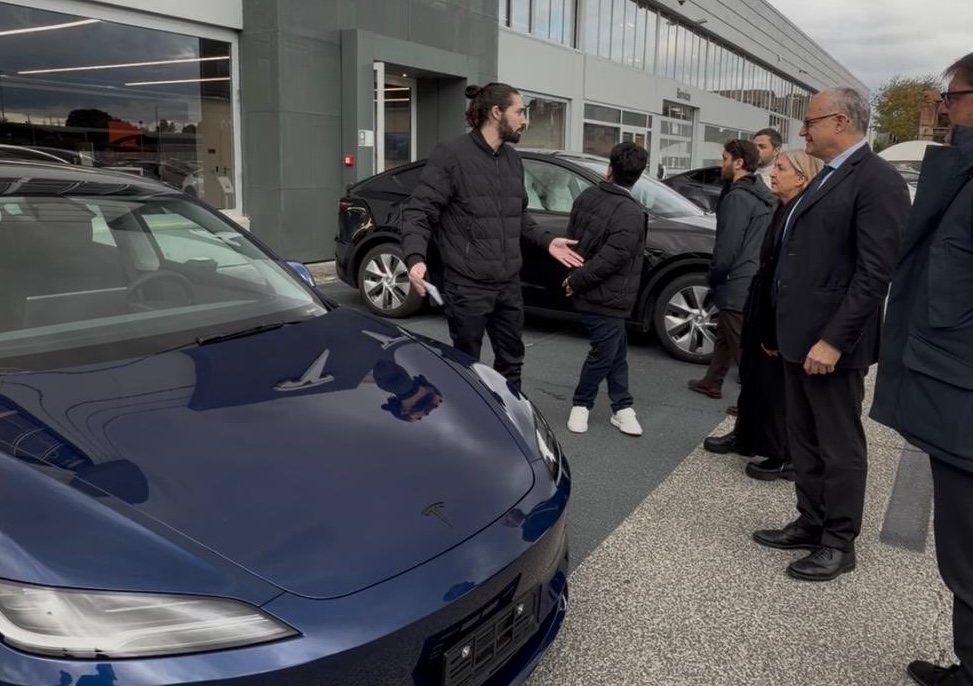
Tesla definitely seems to be actively engaging European officials on FSD’s capabilities, with the company hosting Rome Mayor Roberto Gualtieri and Mobility Assessor Eugenio Patanè for a hands-on road demonstration.
The event marked the first time an Italian mayor tested the advanced driver-assistance system in person in Rome’s urban streets. This comes amid Tesla’s push for FSD’s EU regulatory approvals in the coming year.
Rome officials experience FSD Supervised
Tesla conducted the demo using a Model 3 equipped with Full Self-Driving (Supervised), tackling typical Roman traffic including complex intersections, roundabouts, pedestrian crossings and mixed users like cars, bikes and scooters.
The system showcased AI-based assisted driving, prioritizing safety while maintaining flow. FSD also handled overtakes and lane decisions, though with constant driver supervision.
Investor Andrea Stroppa detailed the event on X, noting the system’s potential to reduce severe collision risks by up to seven times compared to traditional driving, based on Tesla’s data from billions of global fleet miles. The session highlighted FSD’s role as an assistance tool in its Supervised form, not a replacement, with the driver fully responsible at all times.
Path to European rollout
Tesla has logged over 1 million kilometers of testing across 17 European countries, including Italy, to refine FSD for local conditions. The fact that Rome officials personally tested FSD Supervised bodes well for the program’s approval, as it suggests that key individuals are closely watching Tesla’s efforts and innovations.
Assessor Patanè also highlighted the administration’s interest in technologies that boost road safety and urban travel quality, viewing them as aids for both private and public transport while respecting rules.
Replies on X urged involving Italy’s Transport Ministry to speed approvals, with one user noting, “Great idea to involve the mayor! It would be necessary to involve components of the Ministry of Transport and the government as soon as possible: it’s they who can accelerate the approval of FSD in Italy.”








